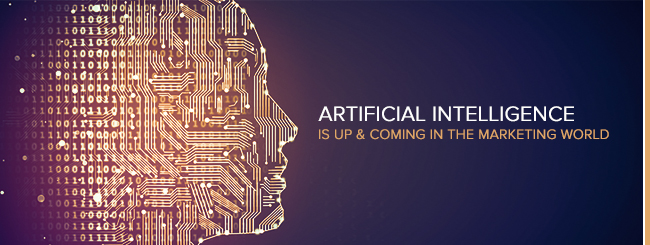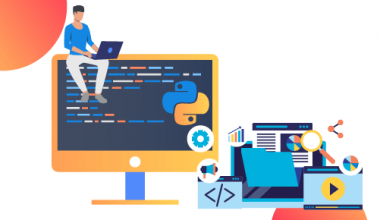Artificial intelligence (AI) is the simulation of human intelligence in machines designed to carry out tasks that typically require human involvement. It involves creating intelligent software programs or devices that can learn, reason, and solve problems in ways that are similar to humans.
There are two main types of AI: specific or weak AI and strong/general AI. For example, speech recognition, image processing, or language translation are examples of narrow AI tasks. However, general AI is capable of carrying out any cognitive task that a human can, including problem-solving, learning, reasoning, and decision-making.

Artificial intelligence is built on machine learning algorithms, which enable computers to learn from data and advance without explicit programming continuously. Machine learning’s deep learning subfield processes data and renders judgments using neural networks with architectures inspired by the human brain.
AI has the potential to revolutionize a number of industries and aspects of daily life, including healthcare, transportation, education, and entertainment. However, serious moral and social questions about how machines will affect employment, privacy, and human autonomy are raised.
How Can AI Help Organizations Accelerate Digital Transformation?
AI can play a significant role in accelerating digital transformation for organizations. Here are the ways in which AI can help Accelerate Digital Transformation:
Automating routine tasks: AI-powered automation can help organizations save time and reduce errors by automating routine tasks like data entry and document processing. Automating routine tasks with AI can be a game-changer for organizations, allowing them to save time, reduce errors, and improve efficiency.
Here is how AI can be used to automate routine tasks:
- Data entry: AI-powered tools can automatically extract data from documents, such as invoices or forms, and enter it into a database or other system. This reduces the possibility of errors and eliminates the need for manual data entry.
- Email Management: Using AI-powered email management tools that can sort and prioritize emails based on their content, sender, and other aspects can reduce the time and work needed to manage many emails.
- Social media management: AI can automatically post content, monitor social media channels for mentions or comments, and respond to customer inquiries.
- Financial management: AI can help automate financial tasks such as accounts payable and accounts receivable, invoicing, and budgeting.
- Human resources: AI can automate HR tasks such as resume screening, scheduling interviews, and onboarding new employees.
- Sales and marketing: AI can be used to automate lead generation, lead scoring, and lead nurturing, as well as to personalize marketing campaigns based on customer data.
Enhancing customer experience: AI can significantly enhance the customer experience by providing personalized and instant support, improving customer engagement and satisfaction.
Here are a few ways AI can improve the user experience.
- Chatbots and virtual assistants: AI-powered chatbots and virtual assistants can provide instant customer support, answering common questions and resolving issues without human intervention. They can also offer personalized recommendations based on customer behavior and preferences.
- Personalization: AI can analyze customer data to create personalized recommendations and experiences, such as product recommendations and targeted marketing messages.
- Natural language processing: AI-powered natural language processing can help organizations understand customer feedback and sentiment in real-time, enabling them to respond quickly to customer needs.
- Voice assistants: AI-powered voice assistants, such as Amazon’s Alexa and Apple’s Siri, can help customers navigate websites, purchase, and perform other tasks using voice commands.
- Predictive analytics: Organizations can provide proactive and individually tailored service by anticipating the needs and preferences of their customers with the aid of AI-powered predictive analytics.
- Visual search: AI-powered visual search can help customers find products and services by analyzing images and matching them to similar products or services.
- Customer sentiment analysis: AI can analyze customer feedback across different channels, social media, email, and chat, to identify patterns and improve customer satisfaction.
Optimizing operations: AI can optimize operations by analyzing vast amounts of data to identify patterns, trends, and insights humans may miss. See below on how AI can optimize operations:
- Supply chain management: AI can analyze data from suppliers, logistics providers, and other sources for optimize inventory levels, lessen lead times, and improve delivery performance.
- Quality control: AI can analyze data from sensors, cameras, and other sources to identify product defects and ensure they meet quality standards.
- Demand forecasting: AI can analyze historical data and other sources of information to predict demand for products and services, enabling organizations to optimize production and reduce waste.
- Energy management: AI can analyze data from smart meters, sensors, and other sources to optimize energy usage, reduce costs, and minimize environmental impact.
- Risk management: AI can identify potential risks and create backup plans by analyzing data from various sources, including social media and weather forecasts.
Enabling data-driven decision-making: AI can help data-driven decision-making by providing real-time insights, predictive analytics, and automated decision-making capabilities. The following are a few ways that AI can support data-driven decision-making:
- Predictive analytics: AI can analyze large volumes of data to predict future trends, enabling organizations to make data-driven decisions based on accurate forecasts.
- Real-time insights: AI can analyze data in real time, enabling organizations to make decisions quickly based on up-to-date information.
- Automated decision-making: AI can automate decision-making processes based on predefined rules and algorithms, such as approving loans or processing insurance claims.
- Data visualization: AI-powered data visualization tools can help organizations interpret data and identify patterns and insights.
- Fraud detection: AI can analyze transaction data and other sources of information to detect and prevent fraud, enabling organizations to make data-driven decisions based on accurate information.
- Risk management: AI has the ability to analyze data from various sources, including social media and weather forecasts, to identify potential risks and create backup plans.
Improving product development: AI can improve product development by streamlining the development process, improving product quality, and accelerating time-to-market. Here is how AI can improve product development
- Design optimization: AI can help optimize product design by analyzing data from previous designs and simulations, enabling engineers to develop better products more efficiently.
- Predictive maintenance: AI can analyze sensor data and other sources of information to predict when equipment is likely to fail, enabling organizations to perform preventive maintenance and reduce downtime during product development.
- Quality control: AI can analyze data from sensors, cameras, and other sources to identify product defects and ensure they meet quality standards during product development.
- Simulation: AI can be used to simulate product performance under different conditions, enabling engineers to test products in a virtual environment before physical prototypes are built.
- Voice of the customer: AI can analyze customer reviews and other information sources to ascertain a customer’s needs and preferences, enabling organizations to develop products that better meet customer needs.
- Supply chain optimization: AI can optimize the supply chain by analyzing data from suppliers and logistics providers, enabling organizations to develop products more efficiently and reduce costs.
Enhancing cybersecurity: AI can enhance cybersecurity by automating threat detection, improving incident response, and strengthening overall security measures. Let’s see how AI can enhance cybersecurity
- Threat detection: AI can analyze large volumes of data and detect anomalies and patterns that indicate potential threats, enabling organizations to detect and respond to security breaches.
- Fraud detection: AI can analyze transaction data and other sources of information to detect and prevent fraud, reducing losses and improving security.
- User behavior analysis: AI can analyze user behavior patterns and identify anomalies that may indicate security breaches, enabling organizations to take action to prevent further damage.
- Network security: AI can monitor network traffic and identify suspicious activity, enabling organizations to quickly detect and respond to security breaches.
- Vulnerability scanning: AI can scan systems for vulnerabilities and identify potential security risks, enabling organizations to address these issues before attackers exploit them.
- Password management: AI can manage passwords and user authentication, enabling organizations to ensure that only authorized users have access to sensitive data and applications.
- Incident response: AI can automate incident response processes, such as isolating infected systems and mitigating damage, enabling organizations to respond more quickly and effectively to security breaches.
Facilitating employee training: AI can provide personalized and interactive learning experiences, enabling organizations to deliver training more efficiently and effectively. Here are some methods in which AI can facilitate employee training:
- Personalized learning: AI can analyze employee data, such as job roles, learning styles, and performance data, to provide personalized training experiences that meet the specific needs of each employee.
- Adaptive learning: AI can manage the difficulty level and pace of learning content based on the employee’s progress, enabling them to learn at their own pace and improve their skills more efficiently.
- Virtual assistants: AI-powered virtual assistants can provide employees with instant answers to their questions, enabling them to access training resources more quickly and easily.
- Interactive simulations: AI can create interactive simulations that enable employees to practice their skills and apply their knowledge in realistic scenarios, improving retention and application of learning.
- Gamification: AI can gamify learning experiences, making training more engaging and motivating for employees.
- Language translation: AI-powered language translation tools can provide training content in multiple languages, enabling organizations to provide training to employees who speak different languages.
- Performance analytics: AI can analyze employee performance data to identify areas where additional training is required, enabling organizations to provide targeted training to address specific skills gaps.
Summary
AI can help organizations accelerate digital transformation by automating routine tasks, enhancing customer experience, optimizing operations, enabling data-driven decision-making, improving product development, enhancing cybersecurity, and facilitating employee training.






